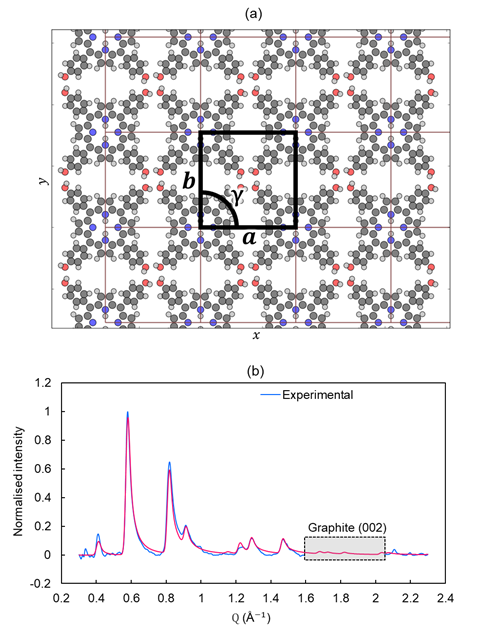2D Self-Assembled Layers
Researchers: Prof Stuart Clarke
We have a long standing interest in the 2D structure of adsorbed molecules. One recent example of this has been 2D crystal layers of a porphyrin adsorbed on graphite.
The xray diffraction data below shows peaks with a characteristic saw-tooth line shape, indicative of a 2D layer (3D crystals have symmetric peaks). The figure also shows the 2D layer structure, unit cell and the comparison of the experiment and calculated diffraction data, indicating very good agreement. The molecules in the layer are flat on the surface and oriented so that the - OH groups are close to each other. This is a sensible arrangement as it facilitates inter -OH interaction, such as hydrogen bonding. However, this arrangement means that this layer does not follow the close packing rules of Kitaigorodskii as the molecules are not 6-coordinate in this 2D layer. However, this may be due to the hydrogen bonding facilitated by the arrangement that overcomes the simple packing rules.
These are reported to have applications in many areas including light harvesting.

